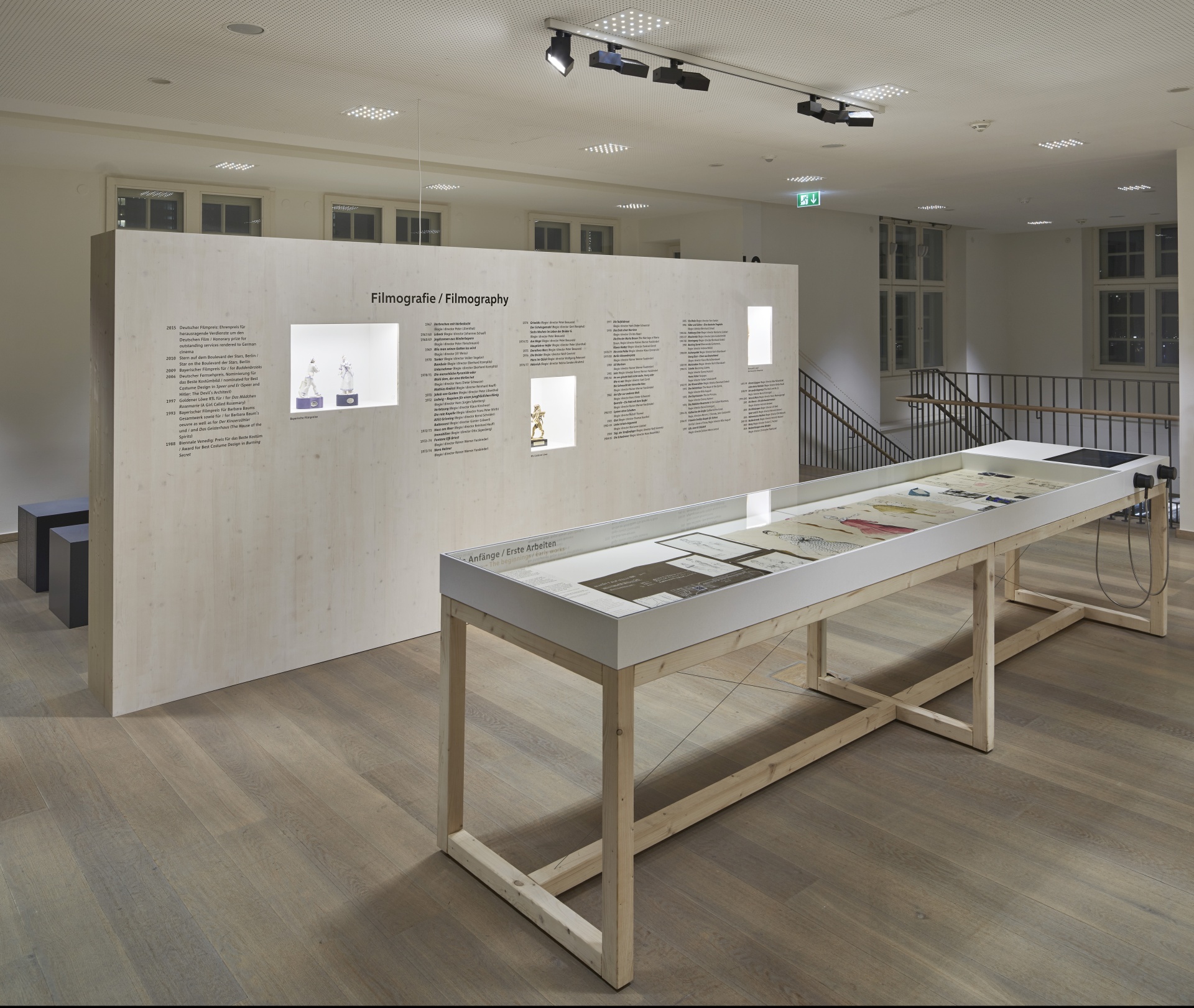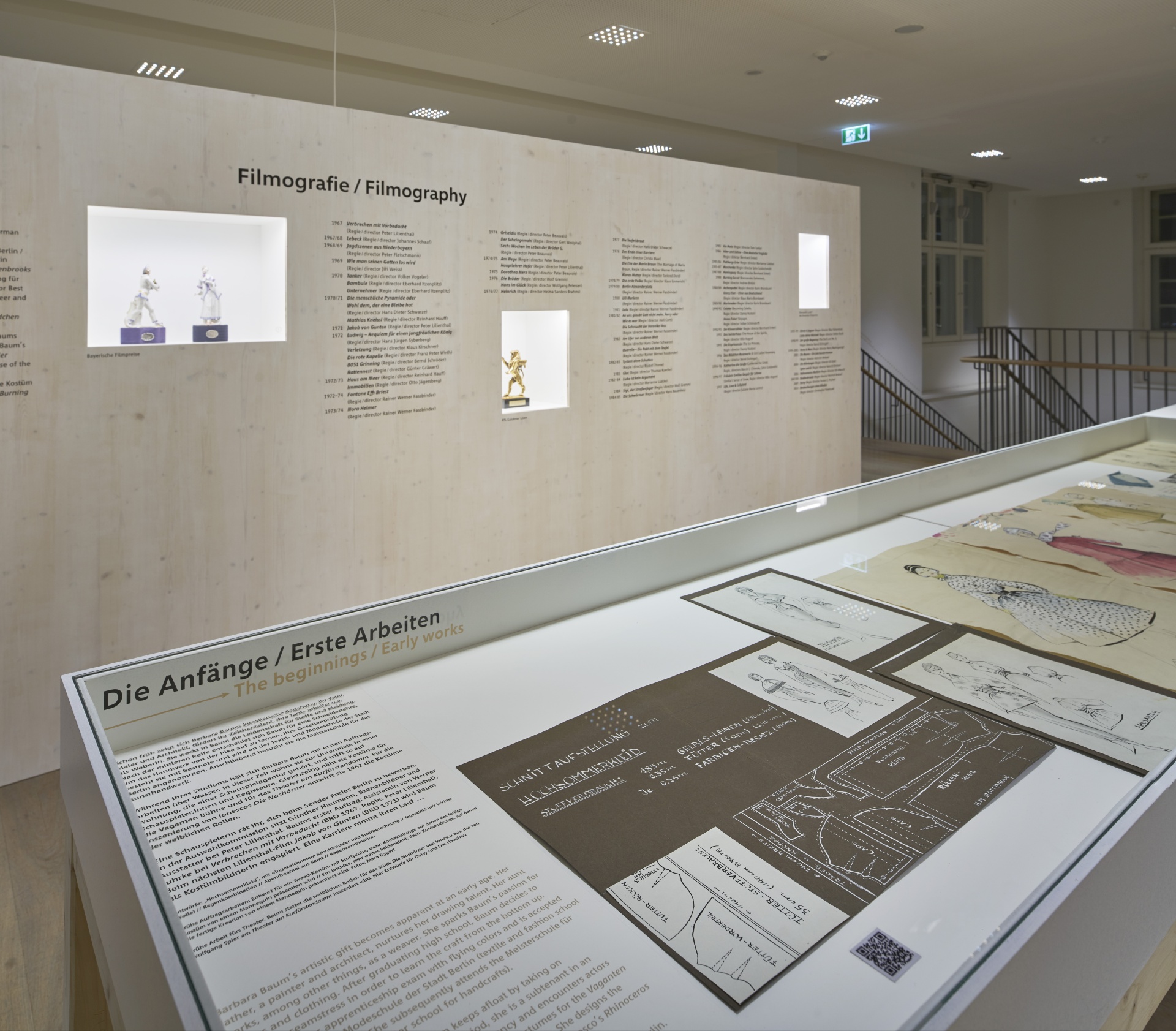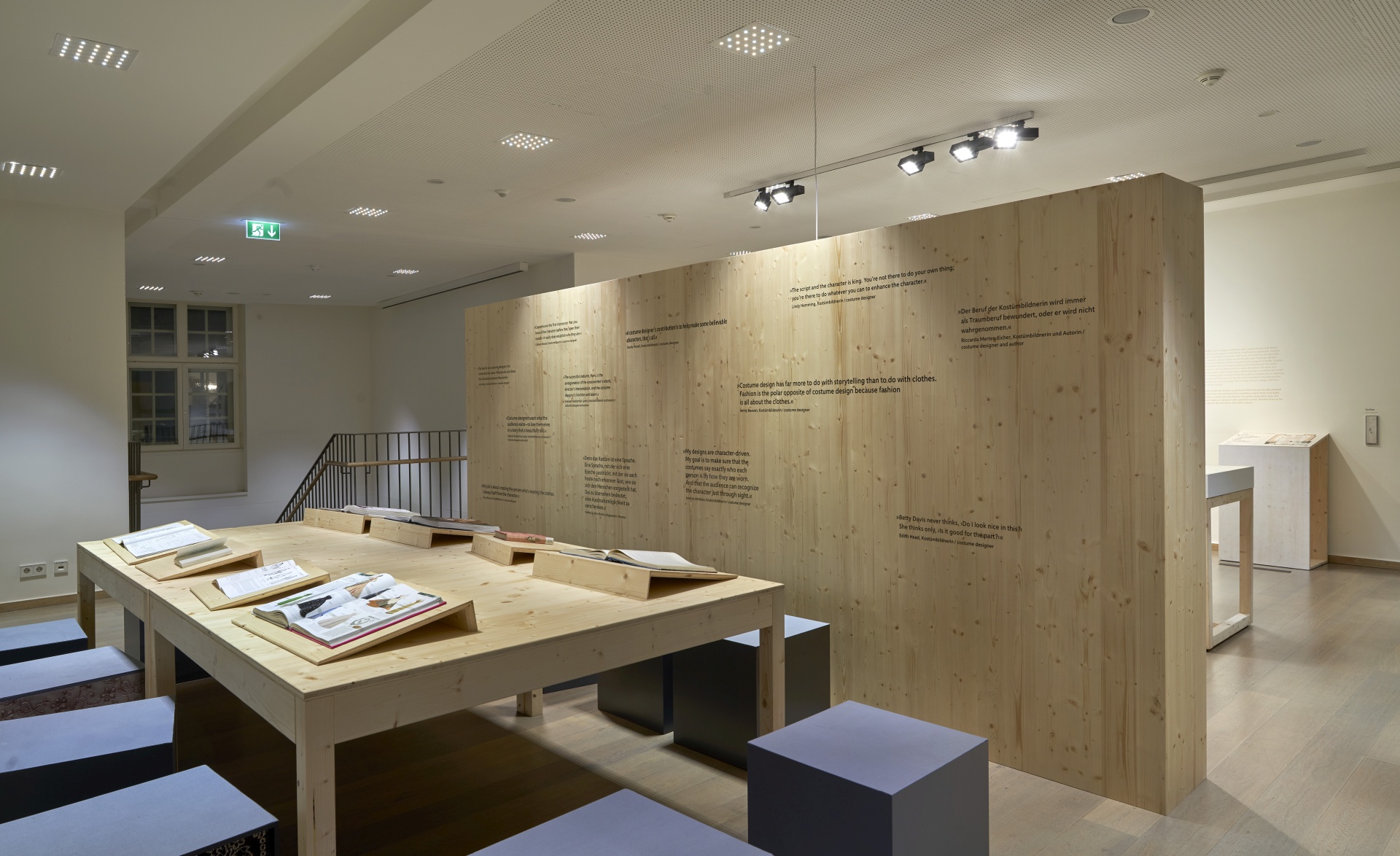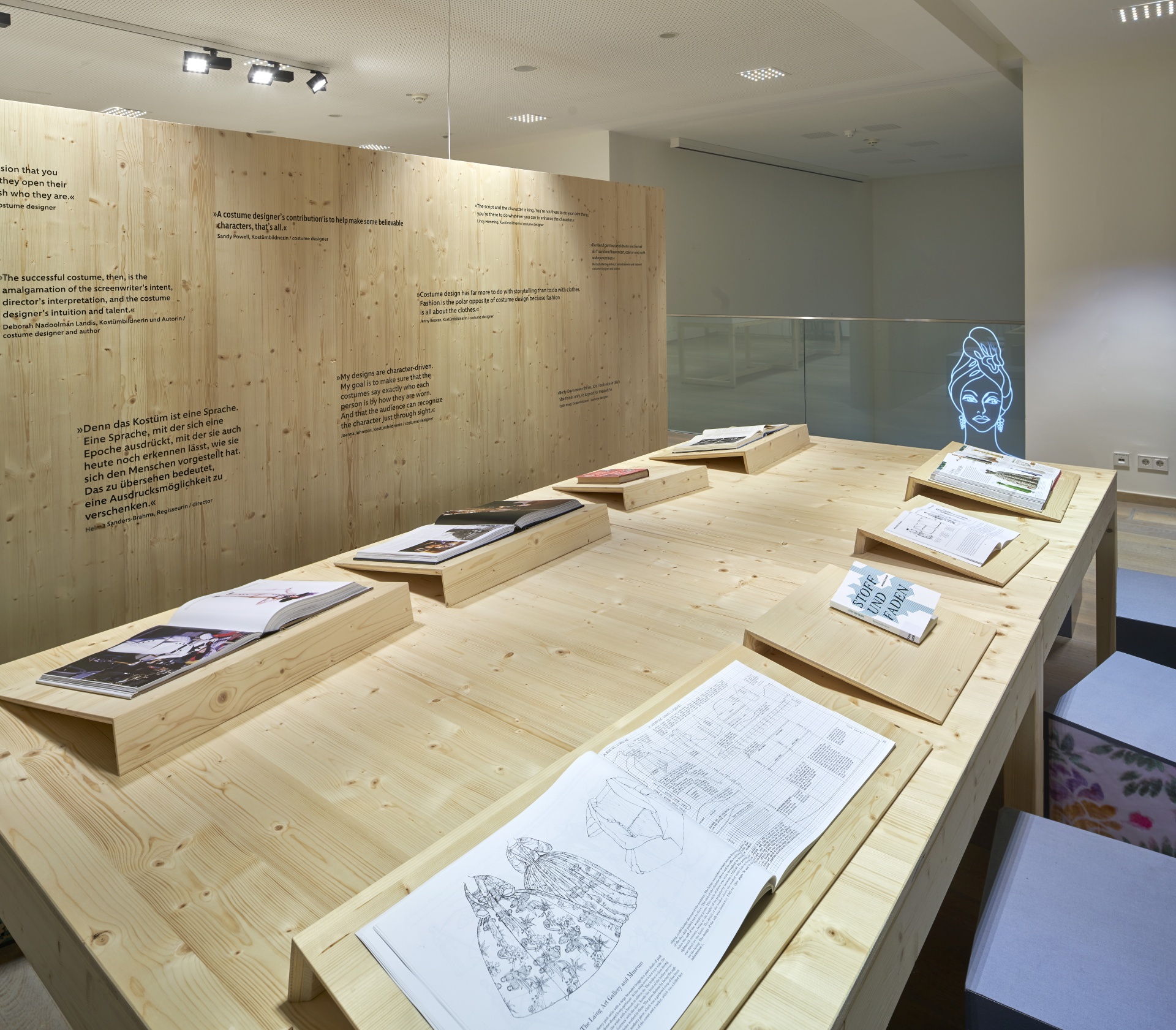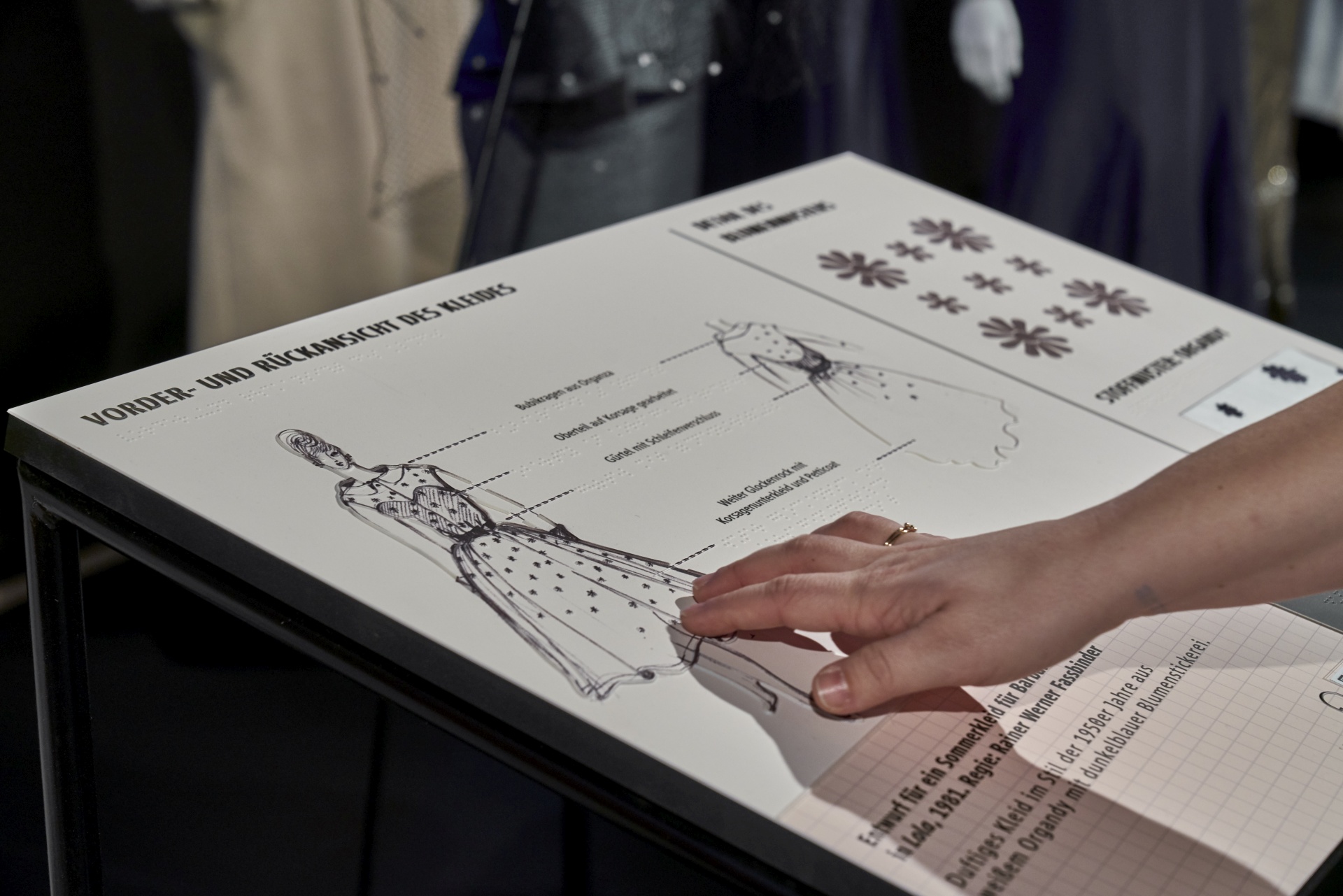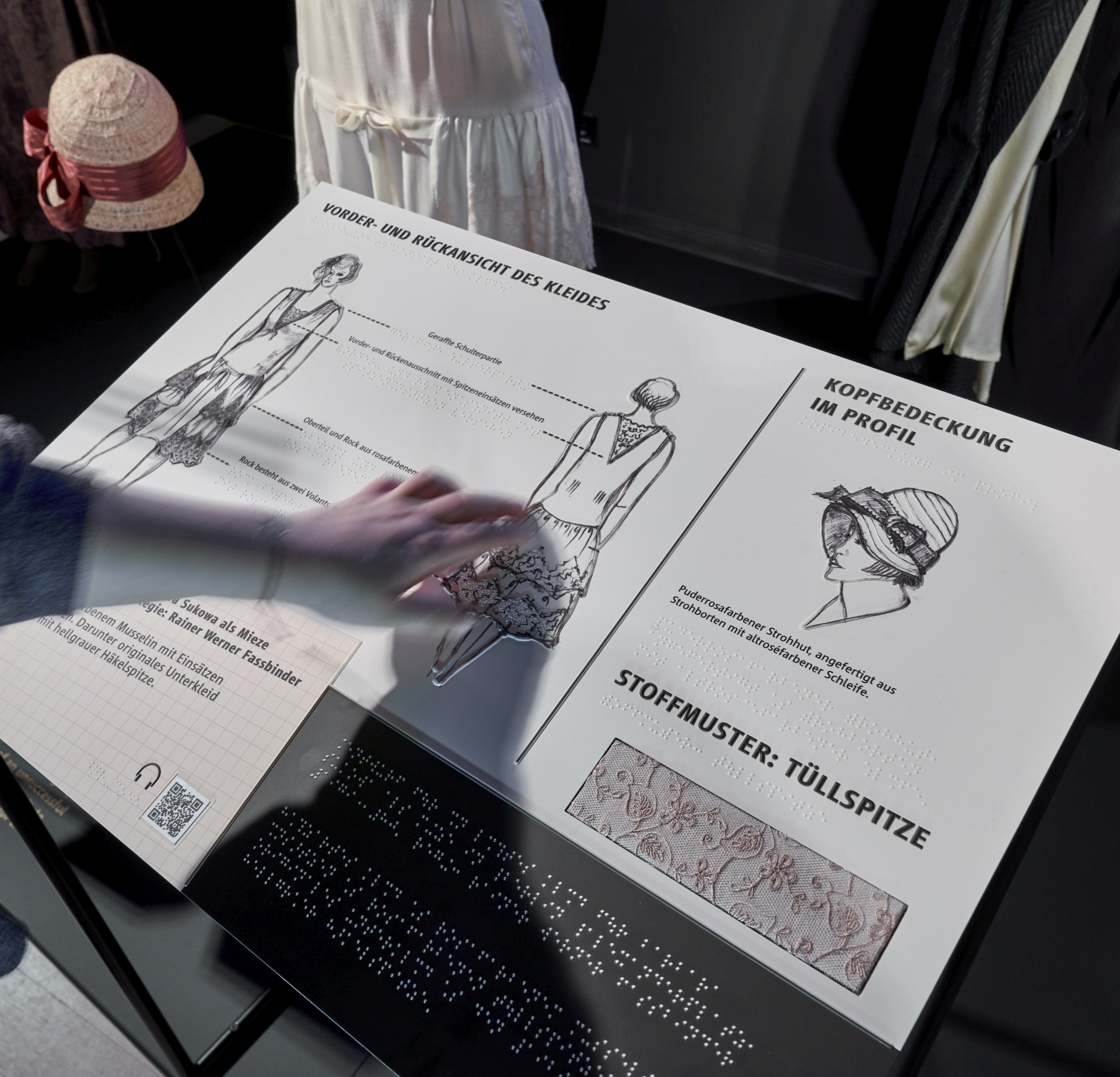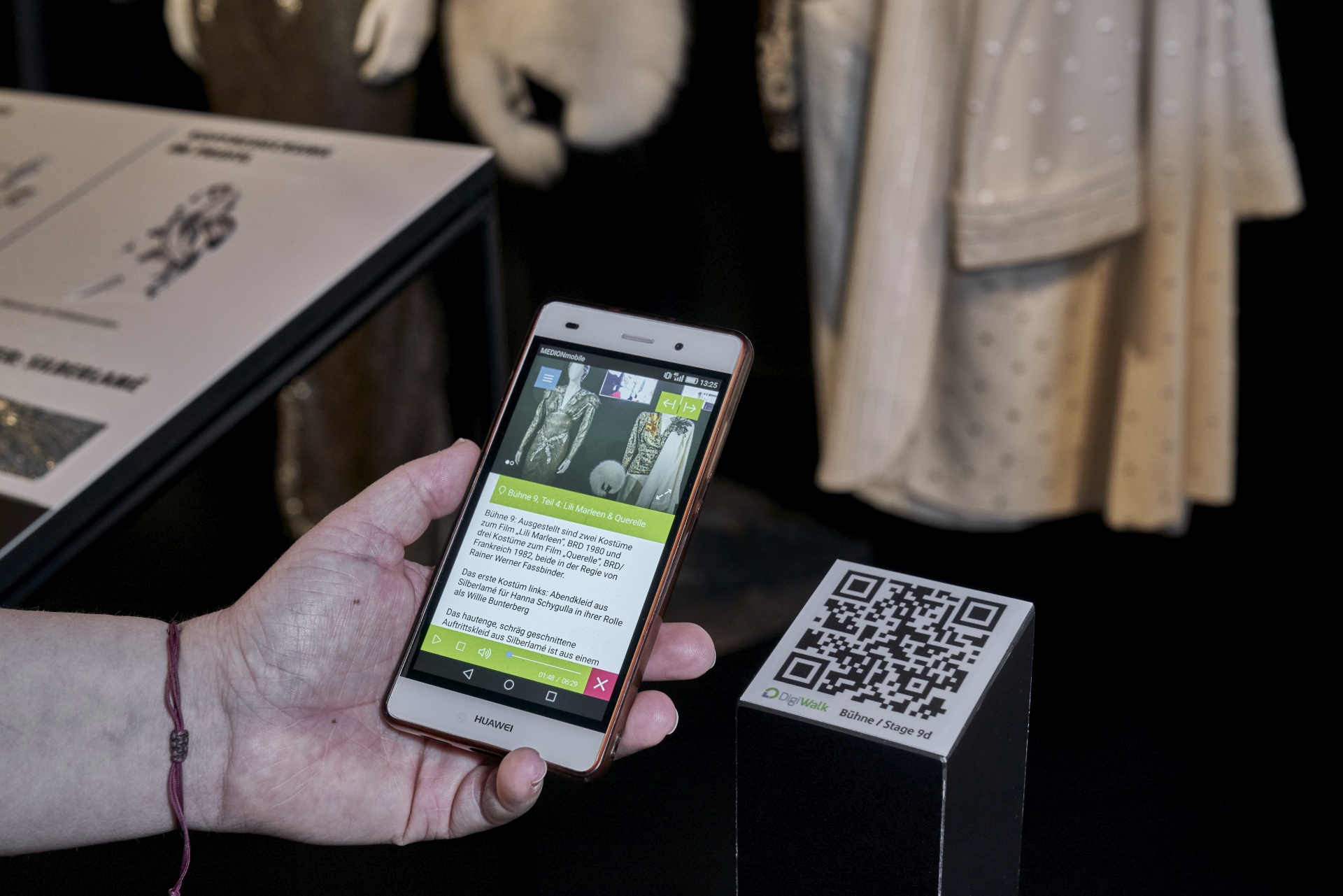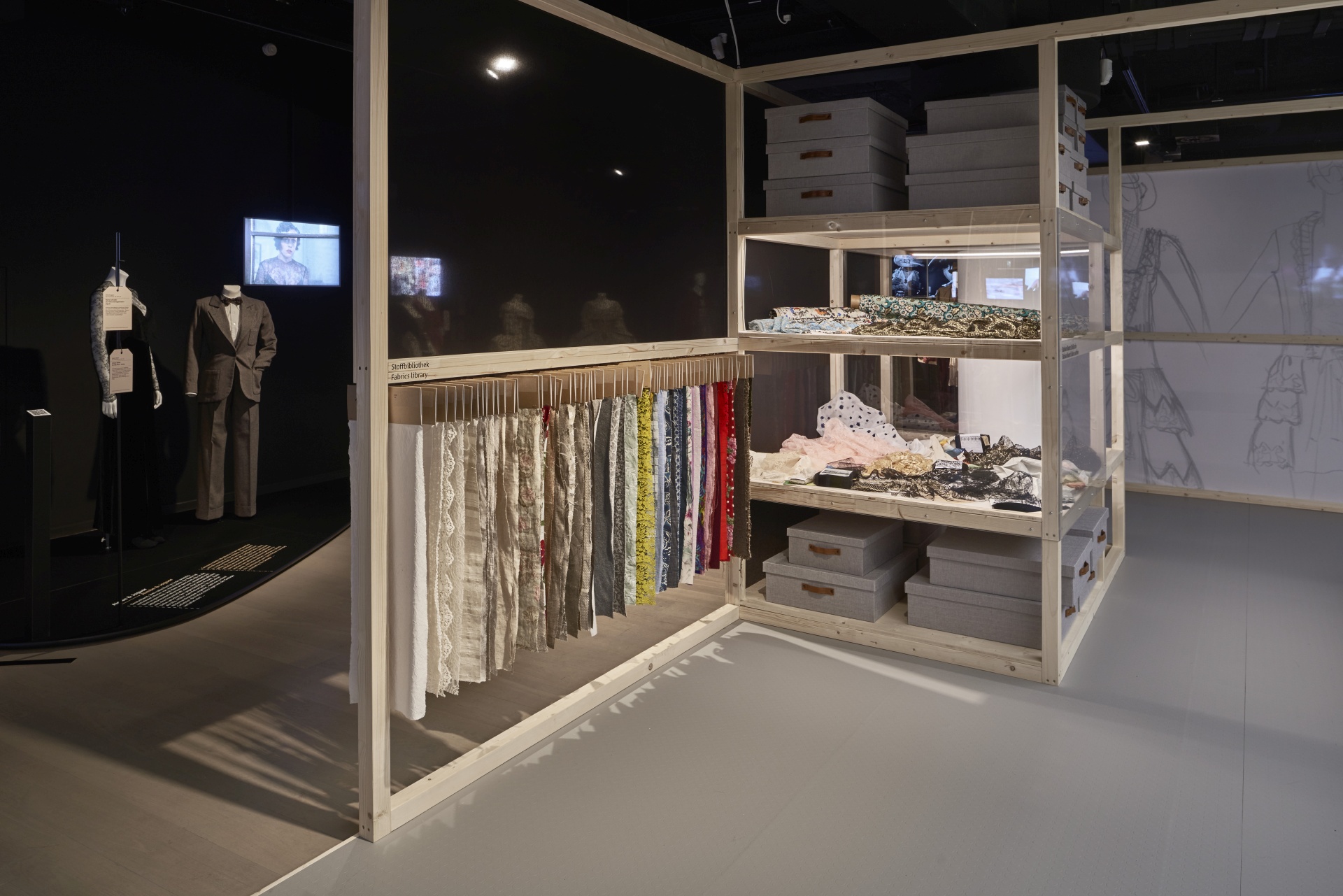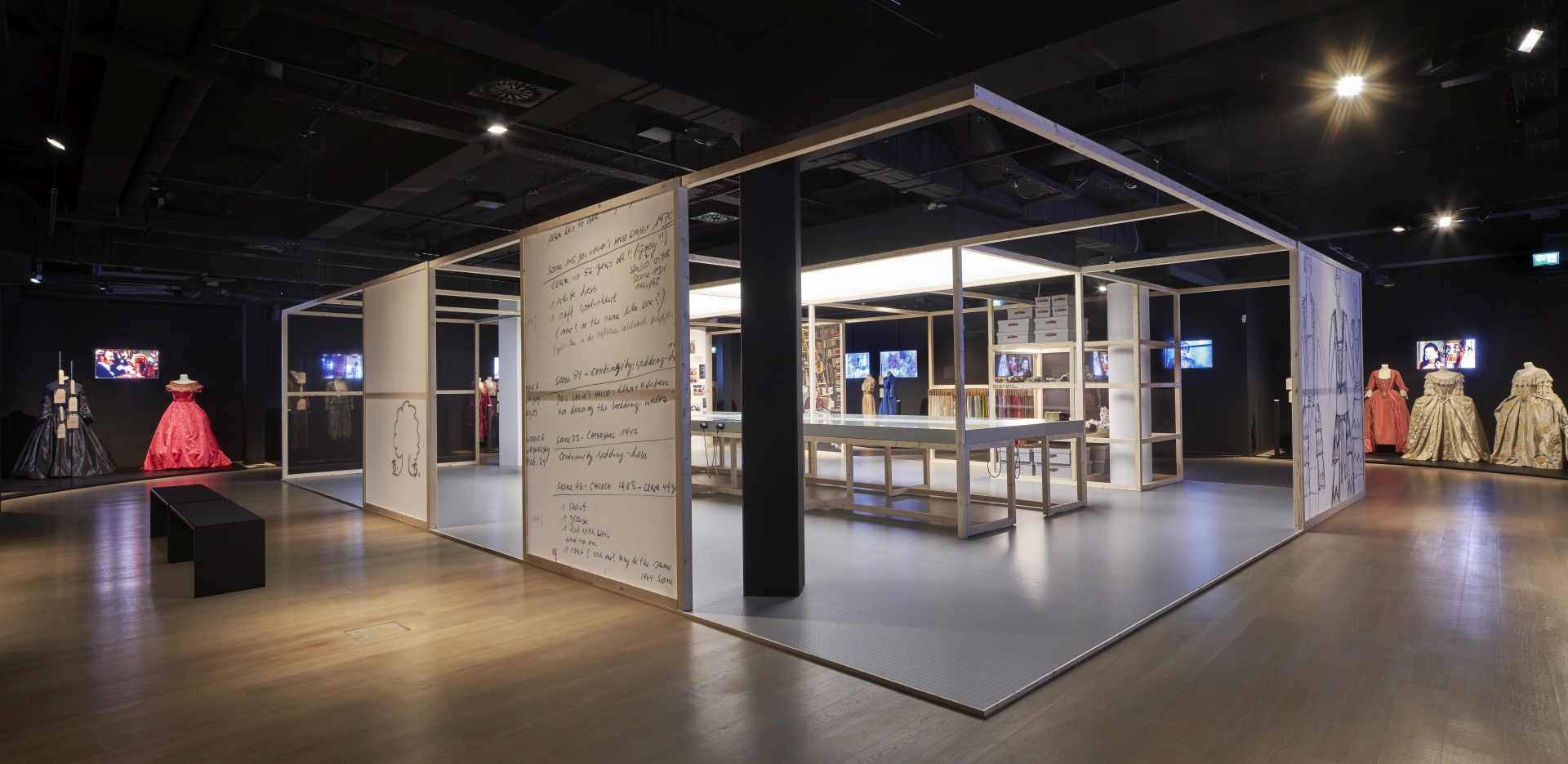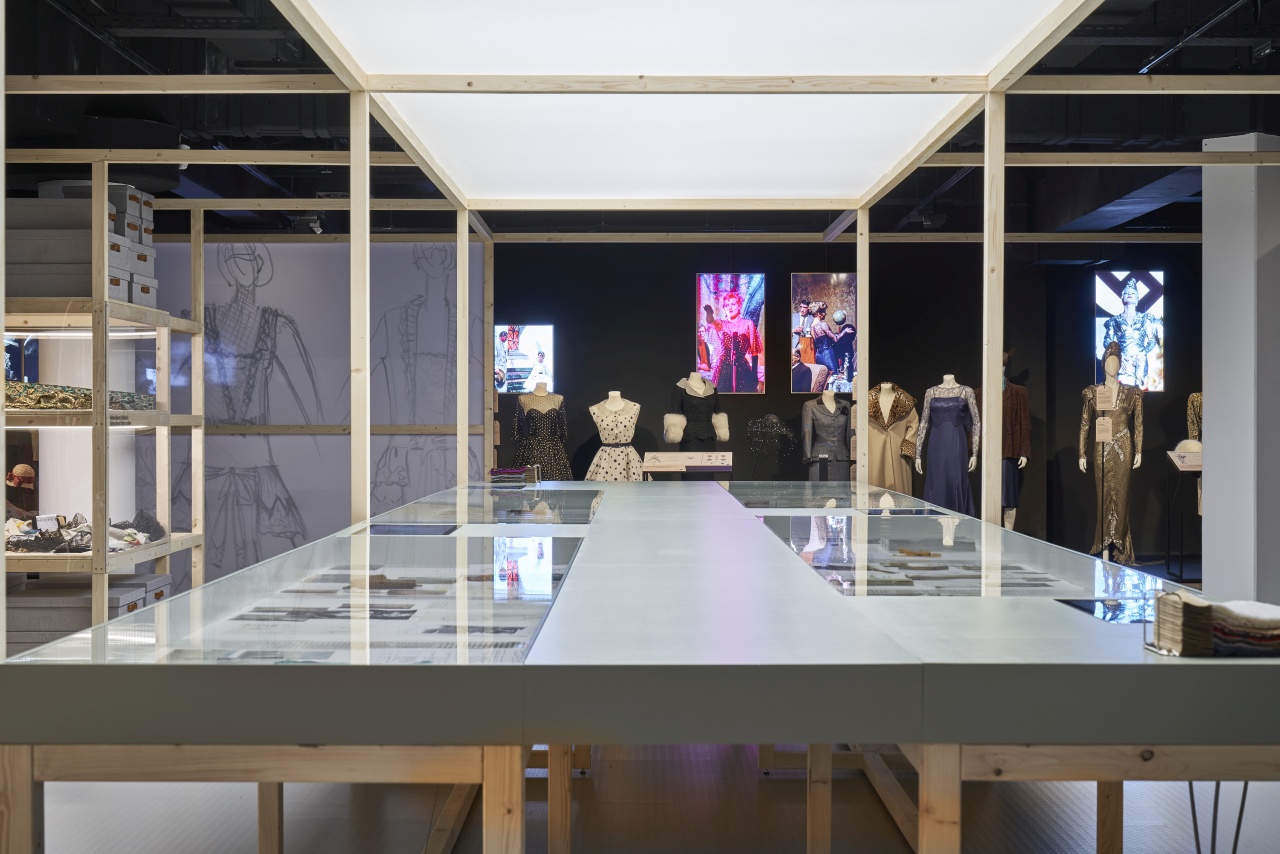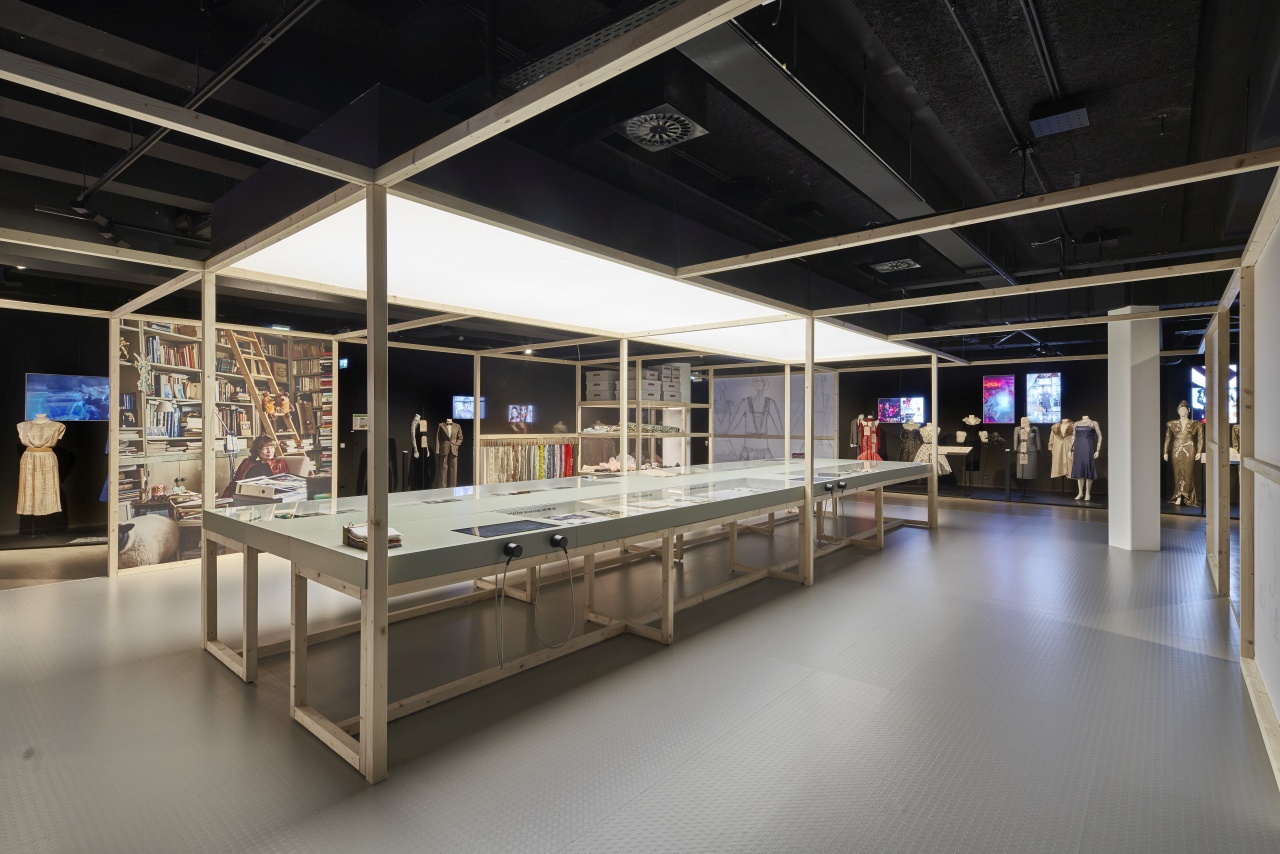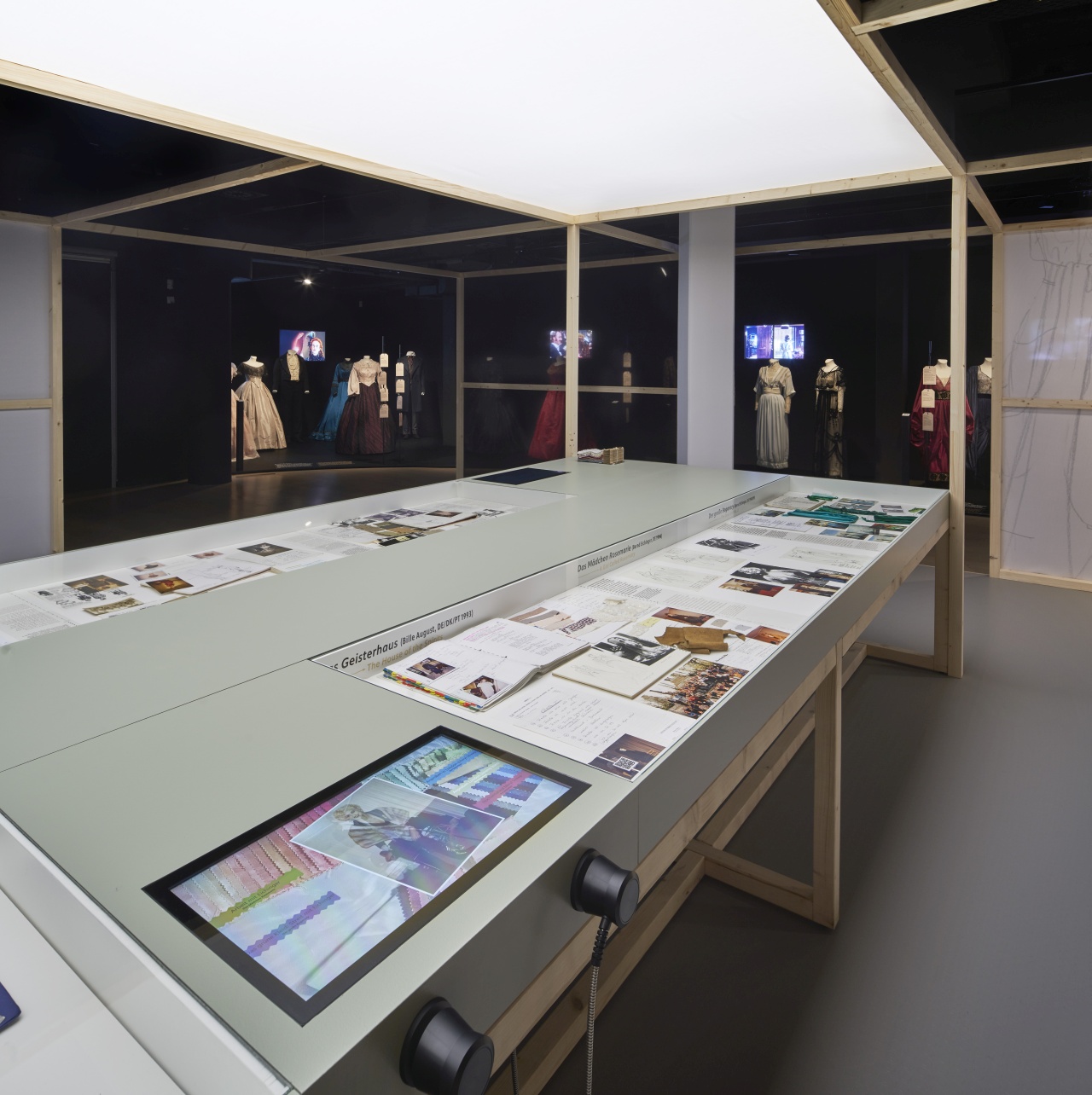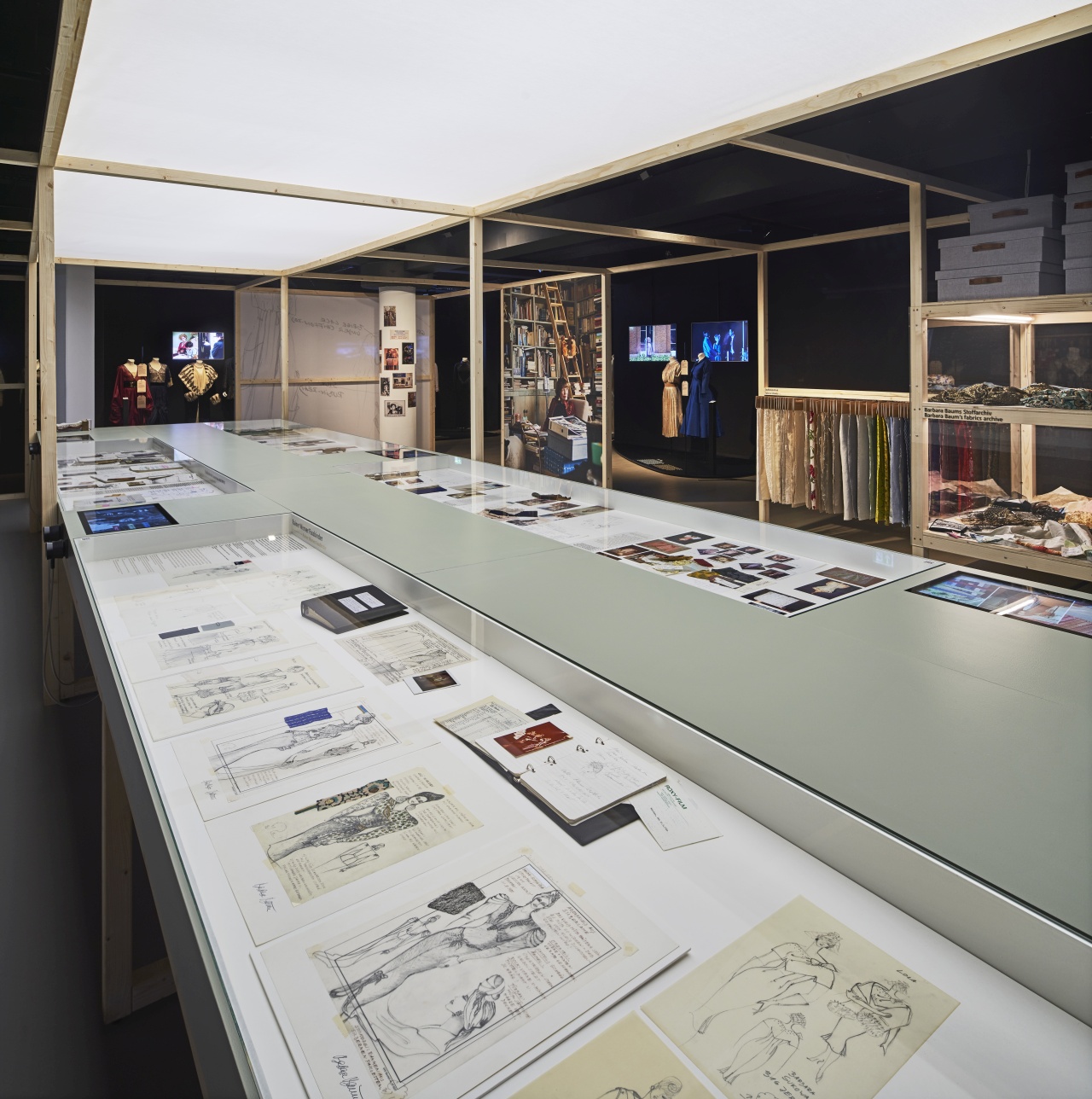A warm welcome to the Deutsches Filmmuseum and to “Close-Up: The Film Costumes of Barbara Baum,” an exhibition dedicated to the remarkable creativity of the renowned costume designer. You will now hear some general information about the exhibition. The text is located on the wall in front of you.
Costume Design is the Third Director
Costume design is one of the essential cinematic arts. It assists the audience in identifying cinematic spaces and periods. It makes the characters’ traits visible, indicates their social status and their state of mind, and in doing so produces identificatory proximity. Costumes help the performers to immerse themselves in the characters that they embody. The costume fabric materializes the moral values and desires of the characters: sometimes protective and reinforcing; sometimes fantastic and exaggerated; sometimes concealing, disguising, or even exposing. The fabrics – often historical in origin – not only constitute a visual accent within the composition but also ensure authenticity.
Costume designer Barbara Baum has an extraordinary sense for fabrics. They are not only her working material, but also a source of inspiration: “I always think in terms of fabrics. I even get goose bumps over exceptional fabrics! For me, the decision to use this or that very specific fabric is usually already half the costume,” she says about herself.
You are currently in the foyer of this special exhibition. The elevators are on your right. On your left, is the staircase. The restrooms are one story higher, on the forth floor.
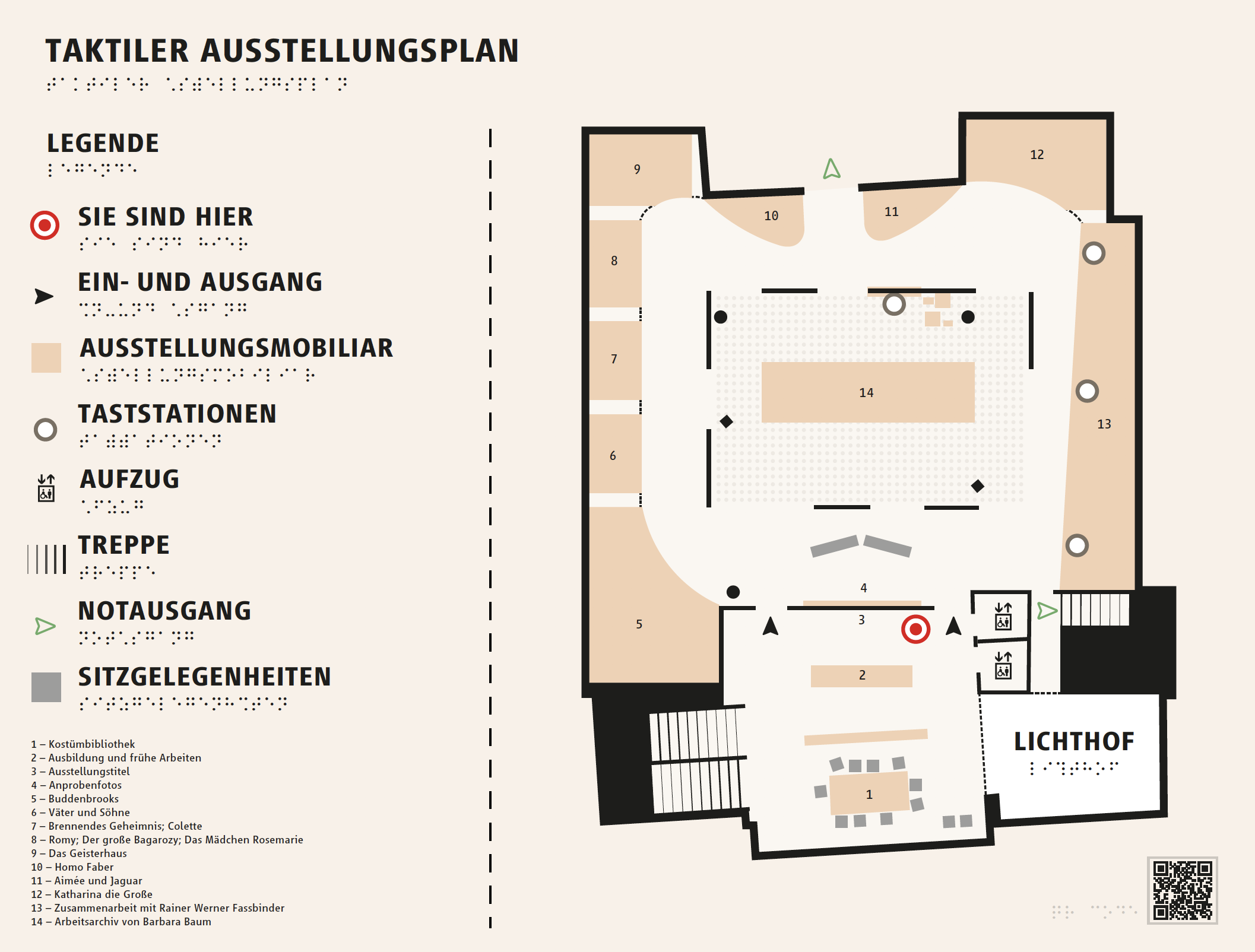
Costume library
Display table with early designs of Barbara Baum
Exhibition title and introduction
Photos of costume fittings and film sets in two box frames
Stage 1: Buddenbrooks
Stage 2: Fathers and Sons
Stage 3: Burning Secret / Becoming Colette
Stage 4: The Devil and Ms. D, The Girl Rosemary, Romy
Stage 5: The House of the Spirits
Stage 6: Voyager
Stage 7: Aimée & Jaguar
Stage 8: Catherine the Great
Stage 9: Collaboration with Rainer Werner Fassbinder
Archive of Barbara Baum
The tactile map in front of you shows how the exhibition space is divided up: the foyer, the main hall, and the various stages and display cases where the exhibits are presented.
Behind you, slightly to the left, is a rectangular display table showing the early designs of Barbara Baum. Behind that, parallel to the table, is a partition wall separating off the costume library. On that partition wall you will find Baum’s filmography and four of the awards she has received: two Bavarian Film Awards, one RTL Golden Lion, and an “Honorary Lola” for outstanding contribution to German cinema. On the back of the partition, in the reading area, are quotes about costume designers and costume design in general.
In front of you to the right, and also slightly further on to the left, are entrances to the main hall. On the wall next to the entrances are buttons that open the doors automatically. The back wall of the main hall displays photographs of costume fittings and film sets in two box frames. Seats are positioned in front of the photographs. The hall, with its dark walls and wooden floor, is diagonally in front of you. Its surface area is 375 meters squared.
Along the walls, numbered in a clockwise direction, are nine stages presenting a total of 52 costumes from 18 different movies. The exhibition begins to the left of the left-hand entrance with Stage 1, dedicated to the movie Buddenbrooks. The following eight stages exhibit costumes from the movies Fathers and Sons, Burning Secret, Colette, Romy, The Devil and Ms. D, A Girl Called Rosemary, The House of the Spirits, Voyager, Aimée & Jaguar, Catherine the Great, and seven films by Rainer Werner Fassbinder, with whom Baum enjoyed an intense working relationship. Digital screens behind the costumes present a montage of movie clips.
The narrow gaps between the stages are marked by thin raised strips on the floor designed to help you find your way with a cane.
On the floor in front of the stages – in most cases on the left – long black wooden strips running parallel to the stage indicate the location of pedestals. On the top of those pedestals are QR codes. If you scan the QR code with your smartphone you will hear descriptions of the costumes in front of you. In front of Stage 9, the same kind of floor markings indicate three tactile stations featuring relief graphics of Baum’s sketches of the various costumes. Form and cut, the fall of the folds, or details such as sequins can be felt with one’s fingertips. Barbara Baum’s notes for the dressmakers are presented on legends in braille. An original fabric swatch conveys the haptic quality of the material used. The tactile information is accompanied by an audio description. The QR code for the tactile graphic is located at the bottom center of the board, within a tactile square frame.
The original film costumes – the results of artistic ingenuity, the art of tailoring, and not least careful calculation and planning – have been installed in the studio space. Outside the framework of the cinematic space, these testimonies to the art of staging fabric have a presence all their own. Their static presentation enables visitors to closely examine the costumes, which in the museum setting become three-dimensional exhibits. Labels indicate the material they are made of: crêpe, brocade, paduasoy, gold and silver lamé, muslin, organdy, velvet, satin, silk, lace, taffeta, tulle, tweed, wool – all of them fabrics that bear witness to Barbara Baum’s constant pursuit of the highest quality and the “right” material. Because the original costumes may not be touched for reasons of conservation, an area has been set up where visitors can feel 50 samples of the high-quality fabrics.
This area is in the middle of the hall. It has gray studded flooring and is designed to resemble Barbara Baum’s studio. The area is partly separated from the rest of the space by frames covered with fabric or with graphics. You may touch these fabrics. Please note that there are columns and pillars in the corners of the studio area. There are several possibilities to enter this area.
This is where Barbara Baum talks about her profession. Materials from her archive, such as costume plots, costume lists, and much more testify to her first intense examination of screenplays. Concrete ideas grow out of this that are materialized and ultimately integrated into the image on film. Budget plans, invoices, daily call sheets, and purchasing lists bear witness to the requirements of the profession. Minutes of meetings, correspondence, fitting and continuity photographs testify to how costume design is embedded in the other cinematic crafts.
In the middle of the studio area is a large table with an end grain tabletop. It has four display cases, and monitors set into the tabletop. These monitors are represented as raised rectangles on the map. On the narrow, left edge are files with fabric samples for you to touch. A shelf displays archive boxes, fabric samples, and various types of lace. To the left of that you can touch some other fabric samples, which have both text and braille labels.
We hope you have an enjoyable, multi-sensory experience at the “Close-Up” exhibition. The audio descriptions of the 52 costumes and the contents of the display cases and tactile stations were produced by audioskript on behalf of The Deutsches Filminstitut & Filmmuseum.


